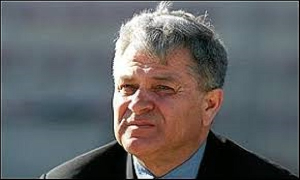Opinions of Saturday, 11 April 2009
Columnist: GNA
The Saga of Permits for Telecom Masts
A GNA Feature by Samuel Dowuona
Accra, April 8, GNA - It is no secret that the quality of mobile
telecom service in this country has not been commensurate with the
fast rate at which the industry has grown over the past decade. From 380 mobile telecom subscriptions in 1997, there are now
more than 12 million subscriptions - with over 50 per cent penetration
of the population - and yet none of the six multinational networks has
been able to provide complete nationwide coverage yet. The market leader, MTN is ahead of the pack with around 70 per
cent coverage serving almost seven million subscribers. The other
operational players, Tigo, Onetouch, Kasapa, and Zain have lower
coverage. Globacom has not installed any infrastructure off shore yet
so they obviously have zero coverage. Besides their not-too-impressive coverage levels, some, particularly
the big operators, have some of the grave network challenges in the
book, and they have not been spared; they have come under sustained
media bashing for giving a "raw deal" to their subscribers while they
focused on promoting their brand names, arguably to distract attention
from the network challenges. The network operators have usually argued that they have the
resources and expertise to deal adequately with all network problems
but for one obstacle; that of obtaining permits in good time to mount
enough masts to increase capacity and improve on their network
quality. Before a network operator could mount a mast or antenna, it needs
separate permits from the Environmental Protection Agency (EPA);
Ghana National Fire Service (GFS); Ghana Civil Aviation Authority
(GCAA) and District, Municipal and Metropolitan Assemblies.
Permits are issued, only when specific conditions are met. The
operator must, among other things, obtain written neighbourhood
consent from the people living close to the spot where the mast is to
be erected. The operators usually employ agents to look for suitable locations
for masts and they pay between GH¢100 and GH¢ 200 on the average
as monthly rent to owners of cell site locations. But some of the
operators say the amount could go up to GH¢ 500 depending on who
owns the land and how strategic the location is. It is important to note that apart from the GCAA permit, which is
not necessarily linked to the EPA permit, the two others from the
GNFS and the assemblies cannot be issued ahead of the EPA permit. This writer can confirm that each of the network operators have
made between 500 to 4,000 applications to the EPA for permits to
mount masts at different parts of the country but those permits have
not yet been delivered. Indeed the EPA confirmed that it receives 100s
of applications on daily basis. The big network operators blame the woes of their subscribers
squarely on the delays in the issuance of permits. The Chief Executive
Officer (CEO) of MTN, Brett Goschen actually told this Writer that
"the permit agencies are slow" and that it seems they have been
overwhelmed by the fast rate at which the industry was growing. Brett
thinks the EPA and other permit agencies are understaffed and that
was why they were unable to deliver on permits in good time. But Brett is not alone; Major Albert Don-Chebe, Head of Corporate
Communications of Vodafone Ghana, also expressed similar
sentiments saying that "it is really a problem obtaining permits to erect
masts and that was affecting subscriber confidence in the Onetouch
network." An official of Globacom Limited, operators of Glo mobile, could
not hide his frustration when he told this Writer that they have had to
push back deadlines for starting operations several times because the
EPA had for the past 11 months since Glo was licensed not issued a
single permit for the company to mount a mast. "This is particularly frustrating for Glo because unlike the other
operators, which inherited some infrastructure from the onset, Glo is
starting from scratch so the EPA permit delays is a huge setback for
us," he lamented. Zain, Tigo, Kasapa also do have issues with the EPA in particular
regarding the issuance of permits for masts. Zain for instance went
ahead of the EPA at some point and mounted some masts, which they
had to bring down later on because of complaints from concerned
persons. The permit agencies, particularly the EPA have their own version
of the permit saga; First of all, the telecom operators are not the only organisations that heap application on the EPA for permits; the EPA receives tonnes of applications from many other corporate
organisations for permits. Mr Albert Appiah-Sampong, Director of
Environmental Assessment and Audit at the EPA told this Writer that
the EPA could only work on and grant "so much" permits at a time. Secondly, and more importantly, with regard to telecom masts in
particular, the EPA also receives tonnes of written complaints and
calls from residents of communities within which proposed masts and
other equipment are to be sited. The EPA indeed provided documentary evidence; a long list of
complaints from individuals and institutions about masts mounted
close to them. The nature of the complaints include masts erected
without neighbourhood consent; masts close to people's homes and
to schools, causing parents to removed their children from those
schools; noise, fumes and vibration from generators on cells sites
causing respiratory problems and disturbing peoples' sleep; and most
of all the health concerns about the emission of non-iodizing and
non-ionizing electromagnetic radiation from telecom infrastructure. The public concern about radiation is based on the widely spread
"myth" that electromagnetic radiation from both mobile phone use and
from mobile phone infrastructure could in the long run cause cancer,
brain tumour, damage to DNA and destroy cells and tissues on parts
of the body frequently exposed to these emissions. In an article titled "Does the use of cell phone cause brain tumour",
the writer, Sharon O'Keefe, an American Scientist and Chief
Operating Officer of US-based Barnes-Jewish Hospital, quoted
several scientific research reports, all of which showed that there is no
proof of any significant link between electromagnetic emissions from
digital mobile phone use and telecom infrastructure and brain tumour,
cancer and all those health problems as is widely held around the
world. One report, however, said there is an increased risk of brain
tumour with the use of analogue phones, not digital phones.
Obviously, that risk is not a factor for Ghana because there are no
more analogue mobile phones in the country. But the scientists themselves admitted that numerous limitations do
exist in studies of the impact of cell phone use and nearness to
telecom infrastructure. Some of the first pioneering studies had
methodological flaws, including short duration of cell phone use for
risk assessment, exposure of radiofrequency not rigorously
determined, little if any data about wave or power density, and
controls that were not well defined. The EPA said whiles preparing to undertake a vigorous public
education to correct the "wrong perception" about the effects of
electromagnetic radiations, it could not as yet ignore the myriad of
complaints by the public and issue permits just because mobile
telecom must go on; In the view of the EPA, it is better to attend to
the genuine aspects of the complaints about the fumes, noise,
vibrations from cell sites generators as wells as the violation of
neighbourhood non-consent (in some cases) than to heed to the
grievances of the telecom operators. In the face of the conflict between making sure that telecom goes
on smoothly and at the same time lives are protected, the EPA has put
together a 26-page draft document intended to set out the modalities
for mounting telecom cell sites. In that document, entitled "Guidelines for the Installation and
Operation of Communication Mast in Ghana", the EPA observed that
the legal regime regulating the telecom industry in general had not been up to cope with the pace of development in the industry; and that
indeed telecom operators have often ignored the regulatory
requirements such as the Environmental Assessment Regulations
1999, LI 1652; Ghana Atomic Energy Act 588; Radiation Protection
Instrument, LI 1559; National Communication Authority (NCA)
Regulations, LI 1719; Local Government Act, Act 462 (1993);
Building Regulation, LI 1630 (1996); and Town and Country Planning
Law, Cap 84 (1945) with regard to mounting masts.
The EPA, therefore, strongly proposes that whiles the guidelines is intended to "encourage" rather than enforce co-location of masts to enable operators to share common masts as a way of reducing the indiscriminate littering of residential areas and the countryside with masts; co-location should actually be legally binding on the telecom operators. The position is that there should be a law that empowers the NCA to make it a licensing requirement for telecom operators to co-locate. It should also be possible for the NCA itself to mount masts at strategic points for the purposes of co-location.
Minister of Communications, Haruna Iddrisu, told this Writer that the Ministry was strongly in favour of a legislation to back co-location and that already the Ministry was assisting some of the operators to
materialise their co-location agreements on some cell sites in Takoradi
in the Western Region. Director-General of NCA, Mr Bernard Forson
is on the same page with the Minister regarding co-location. Co-location will reduce the number of masts and their attendant
environmental and health concerns. Besides, it would also save the
operators money. Industry experts have actually projected that
co-location would save operators 30 per cent of capital investments. So far some of the network operators have agreed on 100s of cell
sites for co-location, but for whatever reason they have not taken
action on a single one of those agreements yet.
MTN CEO Brett Goschen says MTN has fulfilled its part of an
agreement between the operators and submitted the list of all of its
current and future cell sites to the others but none of the others had
done same yet. But proper and strategic spread of telecom masts, whether for
co-location or by individual operators, goes beyond the seeming
tug-of-war between the operators and the EPA; it is a major town
planning issue as well. Indeed the EPA admitted that part of the
reasons for its seeming inability to ascertain whether a particular
location was fit for a telecom mast or not is the absence of properly
laid down town and city development plans. It is important that the
location of telecom and all other infrastructure be part of a big
development plan but that is non-existent in Ghana. The Ghana Institute of Planners held a press conference sometime
back and complained bitterly that they had been placed at the back
burner and had not been given the opportunity to inject some planning
into the whole exercise of national development. The planners argued
that town, city and country planning was a very expensive exercise but
it was a necessary evil which would pay off in the long run. But one
government after another only pay attention to the cosmetic stuff with the next elections in mind, instead of tackling national development the hard way and for that matter bringing the planners fully on board.
Without any prejudice or bias towards the Planners Institute, this
Writer believes that the challenges facing the telecom industry could
better be solved if it were tackled within a holistic national
development planning, otherwise the individual operators would
continue to fish for opportunities to mount their masts anywhere they
found in order to maintain their place in the competition.
This Writer also proposes that the telecom operators should stop pretending to be interested in co-location and take practical steps to
implement their co-location agreements with immediate effect. That
kind of commitment is likely to trigger some trust from the general
public and from the permit-granting agencies, which is likely to lead to greater co-operation between the permit agencies and community leaders on one hand, and the network operators on the other; an obvious win-win situation.
As per the EPA's proposal, the NCA would indeed have to make co-location a licensing requirement and the NCA, through its expert
knowledge, should strategically mount masts and rent them out for
purposes of co-locations. Obviously it saves the operators money and
earns the government extra money. The telecom operators must also include and or intensify
development communication, particularly to ease people's fears about radiation. Since they themselves boast about their financial muscle to
tackle any challenges, they should not wait for the EPA to undertake
public education about radiation; they should do it themselves on the same scale and aggressiveness with which they promote their brands. The EPA proposes that the operators should lead the public education effort for the regulators to validate instead of the other way round.
It is important to plan our development holistically, let there be location since Ghanaians deserve high quality mobile phone services.












